27 Wild Animals in Mexico [Wildlife in Mexico]
Want to know more about the wildlife in Mexico?
Discover 27 wild animals in Mexico in this post, as well as interesting facts about them. 🇲🇽
Learn All About Mexican Animals
Ready to learn all about Mexican animals?
I’ve always been fascinated by animals, and by how they can be so different from one country to another. In this guide, we’ll focus on the many animals Mexico has on the land, in the sky, and underwater.
I’ve split the guide into 4 categories:
- Native animals from Mexico
- Endangered animals of Mexico
- What is Mexico national animal?
- How many animals native to Mexico?
Let’s dive in right away with our first category!
Native Animals from Mexico
Mexico is a large American country located in the northern part of the continent. It is the 13th-largest country in the world, is one of the six cradles of civilization, is the fourth country in the world in terms of biodiversity, and it used to be a Spanish colony, after being home to the Maya and the Aztecs. It is bordered by Belize, Guatemala, and the United States, and its capital and largest city is Mexico City, which counts more than 9,209,000 inhabitants (but more than 21,804,000 if you include the metropolitan area).
An interesting part of the country that I wanted to tackle is its wildlife. In light of that, I have listed the best of it, and I hope you will love learning what animals live in Mexico.
Here’s the Mexico animals list.
1. Mexican wolf
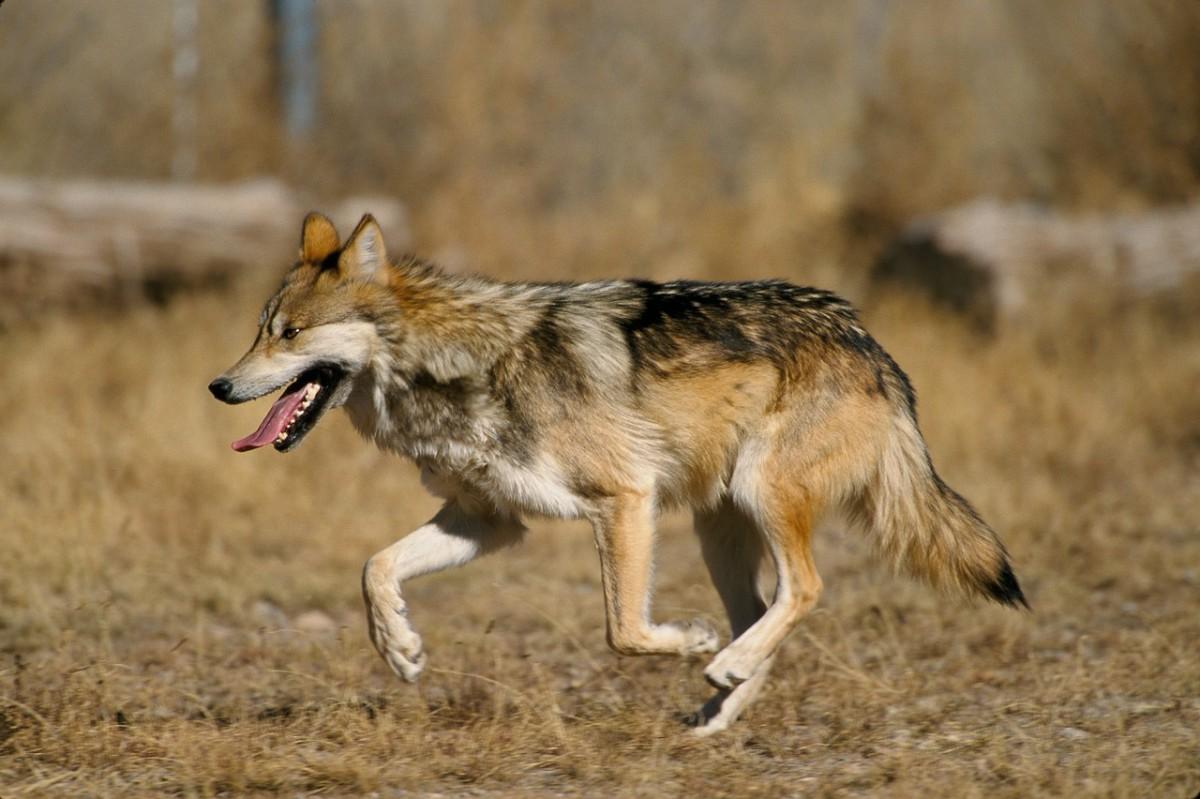
- Name: Mexican wolf
- Scientific name: Canis lupus baileyi
- Conservation status:
The Mexican wolf, locally known as the lobo, is a subspecies of the gray wolf native to the southern United States and northern Mexico. It used to be held in high regard during ancient times in Mexico but became extinct in the wild in the middle of the 1900s.
After a cooperative effort to capture the remaining specimens by the United States and Mexico, this species survived in captivity and has since then been reintroduced.
2. Gray whale
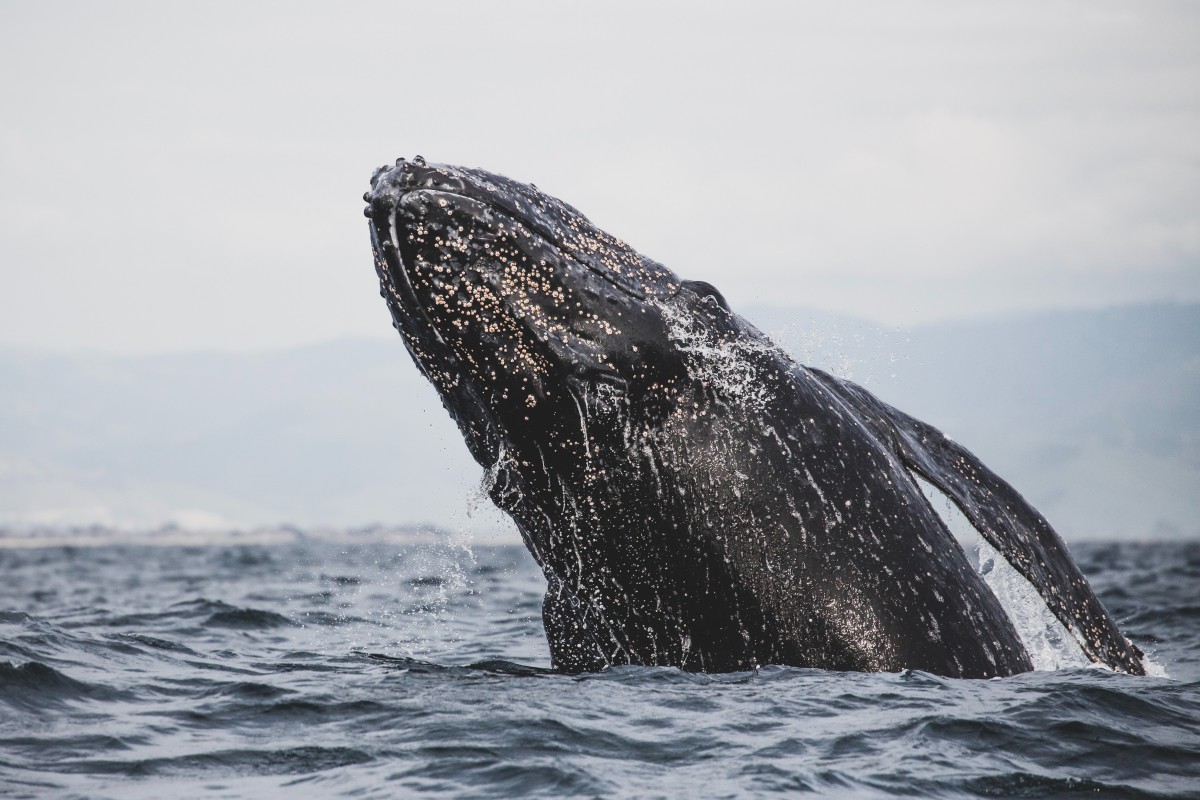
- Name: Gray whale
- Scientific name: Eschrichtius robustus
- Conservation status:
The gray whale, also known as the Pacific gray whale or the California gray whale, is a species of baleen whale that reaches lengths of up to 14.9 m / 49 ft, and weighs up to 41 tonnes / 90,000 lb. Because of its defensive behavior when hunted, it was previously called the devil fish.
This whale is migratory and travels between breeding and feeding grounds every year. It can be found on the northwestern coast of Mexico, as well as in the western United States and Canada and eastern Russia, and northeastern China.
3. Nine-banded armadillo
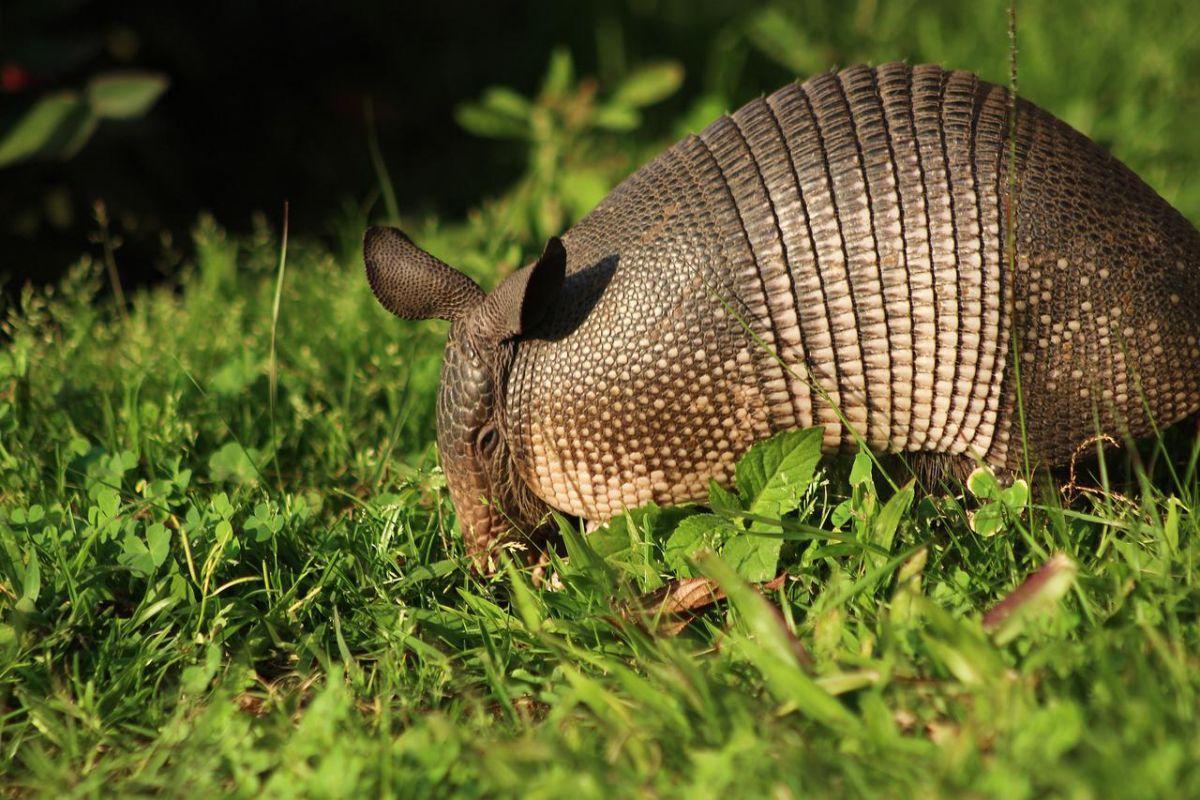
- Name: Nine-banded armadillo
- Scientific name: Dasypus novemcinctus
- Conservation status:
As a group, armadillos are some of the most threatened animals on the planet; fortunately for the nine-banded armadillo, it is one of the few considered of least concern.
Also known as the common long-nosed armadillo or the nine-banded long-nosed armadillo, this mammal is the most widespread of its family, being found from northern Mexico to northern Argentina and Uruguay. It is considered a pest in Texas where it is often seen dead on the roadside.
4. Northern tamandua
- Name: Northern tamandua
- Scientific name: Tamandua mexicana
- Conservation status:
The northern tamandua is a species of anteater native to Mexico and south to the northern edge of the Andes mountain range. It inhabits the subtropical and tropical forests, mangrove swamps, cloud forests, and evergreen forests of southern Mexico, and is a nocturnal animal that spends 40 percent of its time in the trees.
In order to communicate with other individuals, the northern tamandua leaves scent marks on its anal glands.
5. Mantled howler
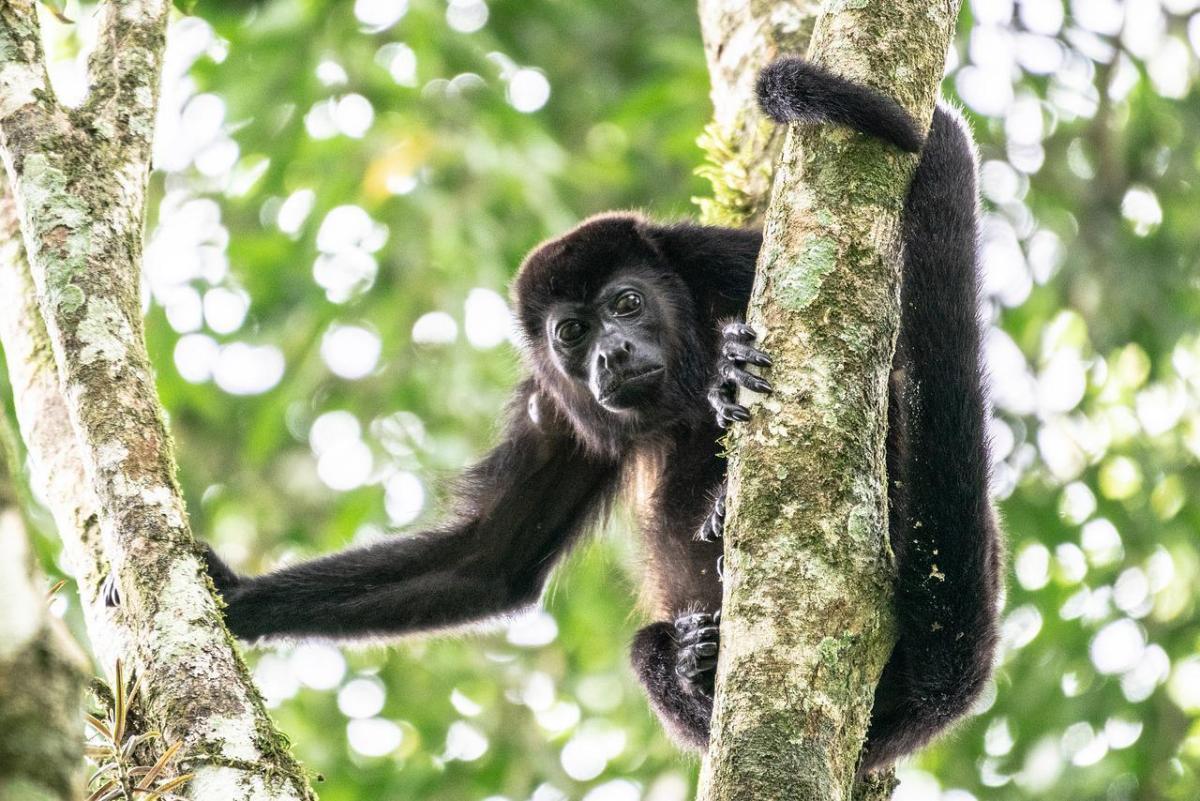
- Name: Mantled howler
- Scientific name: Alouatta palliata
- Conservation status:
The mantled howler is a species of howler monkey native to Central and South America. In Mexico, it lives in the southernmost parts of the country and is seriously affected by habitat fragmentation, which creates major, constant stress among females.
This primate is one of the largest Central American monkeys, and the only one to eat large amounts of leaves. It spends most of its day resting and sleeping and has a loud, amplified call for which it is named.
6. American white pelican
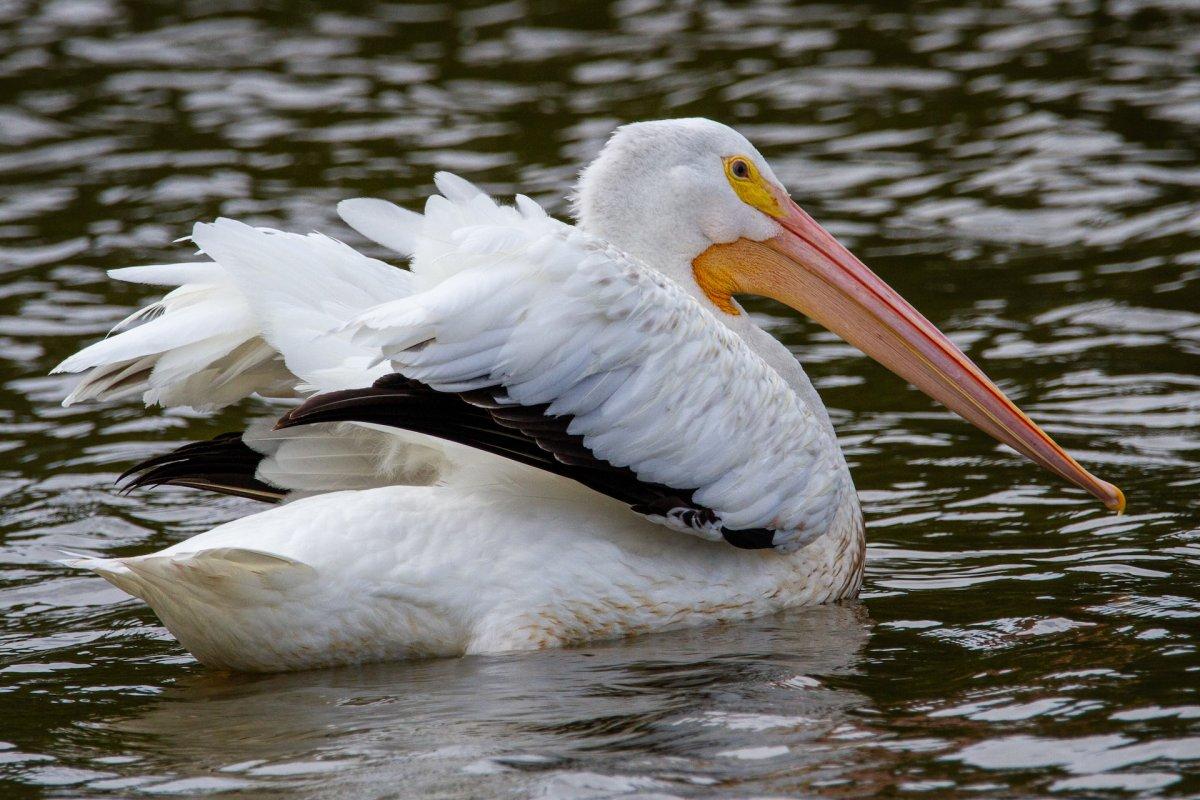
- Name: American white pelican
- Scientific name: Pelecanus erythrorhynchos
- Conservation status:
The American white pelican is a large species of aquatic soaring bird native to much of North America and into Mexico and Mesoamerica. While it breeds in central North America, it usually moves to the southern coasts in order to feed.
Many American white pelicans spend the winter on the Gulf of Mexico coasts, where they feed on fish, amphibians, salamanders, and crayfish. Unlike other species, this pelican does not dive to find food but swims instead.
7. Mexican hairy dwarf porcupine
- Name: Mexican hairy dwarf porcupine
- Scientific name: Coendou mexicanus
- Conservation status:
The Mexican hairy dwarf porcupine, also known as the Mexican tree porcupine, is a species of rodent that can be found in several countries aside from Mexico, namely Guatemala, Costa Rica, El Salvador, Panama, Honduras, Nicaragua, and Belize.
This porcupine is arboreal and has a long, prehensile tail which is particularly useful to hold onto branches. It stays in the same hiding place every day, which produces a strong odor because of all the droppings.
8. North American beaver
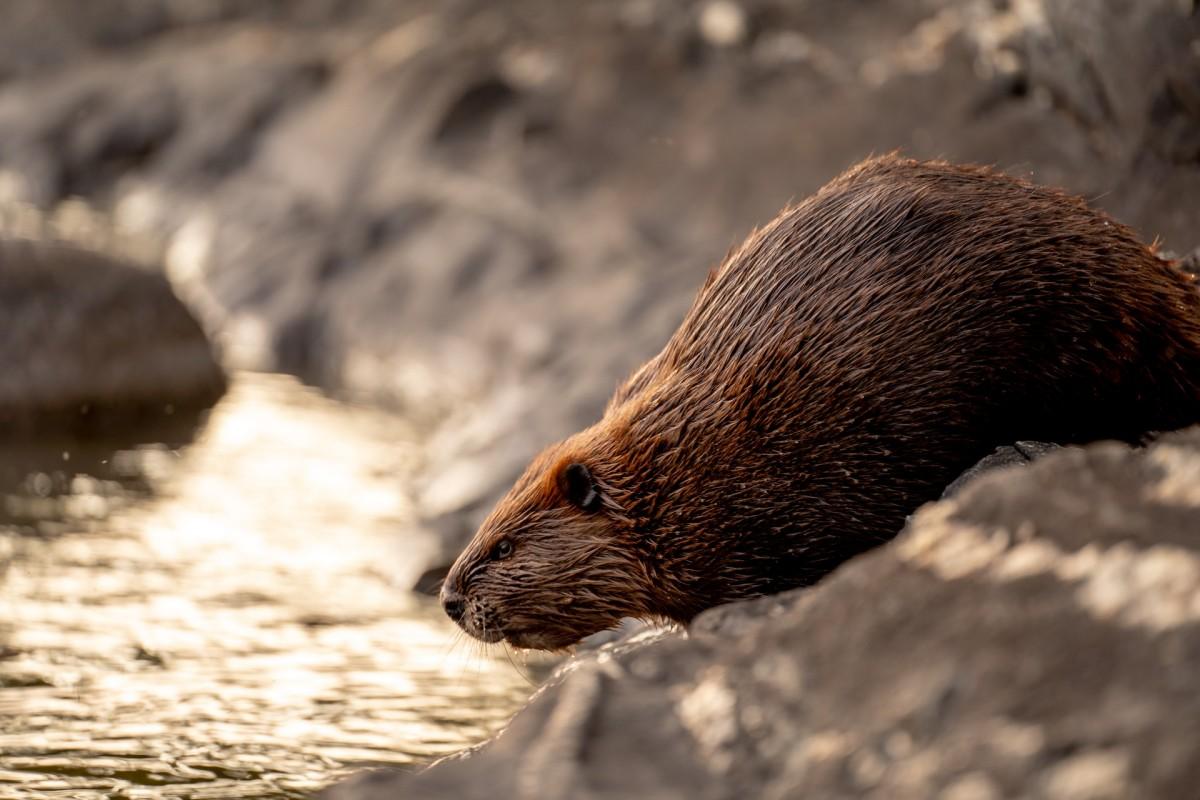
- Name: North American beaver
- Scientific name: Castor canadensis
- Conservation status:
The North American beaver, also known as the Canadian beaver or the American beaver, is a major emblem of the United States and Canada, but it can also be found in northern Mexico, more precisely on the Bavispe River, the Colorado River, and the San Bernardino River.
It is mostly active at night and is an adept swimmer that can stay underwater for up to 15 minutes. This beaver is known to construct its lodges out of twigs, rocks, and sticks.
9. Volcano rabbit
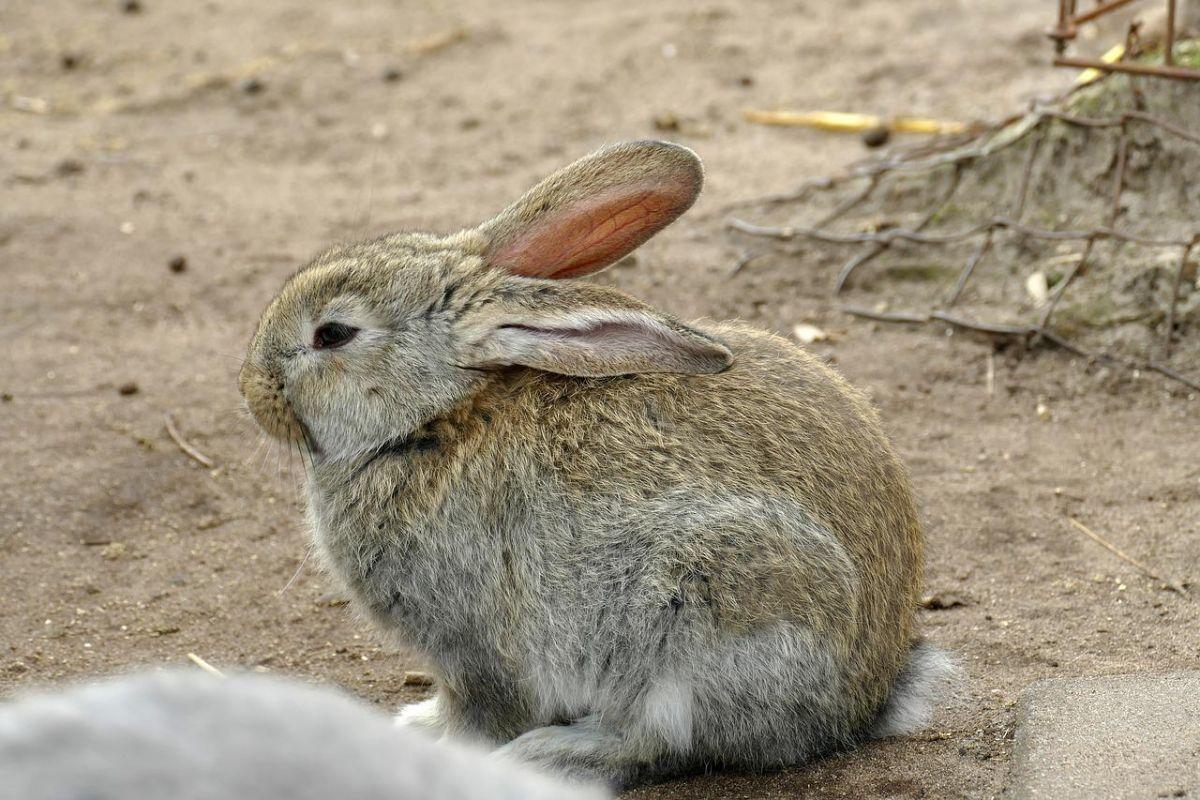
- Name: Volcano rabbit
- Scientific name: Romerolagus diazi
- Conservation status:
The volcano rabbit, locally known as the zacatuche or the teporingo, is a small species of rabbit endemic to the mountains of Mexico. It lives in a very restricted area of the central parts of the country, which is part of why it is considered endangered, other reasons being habitat loss, urban expansion, and forest fires.
This rabbit is the second-smallest species of rabbit in the world, right after the pygmy rabbit, and it lives in groups of 2 to 5 individuals in burrows.
10. American white ibis
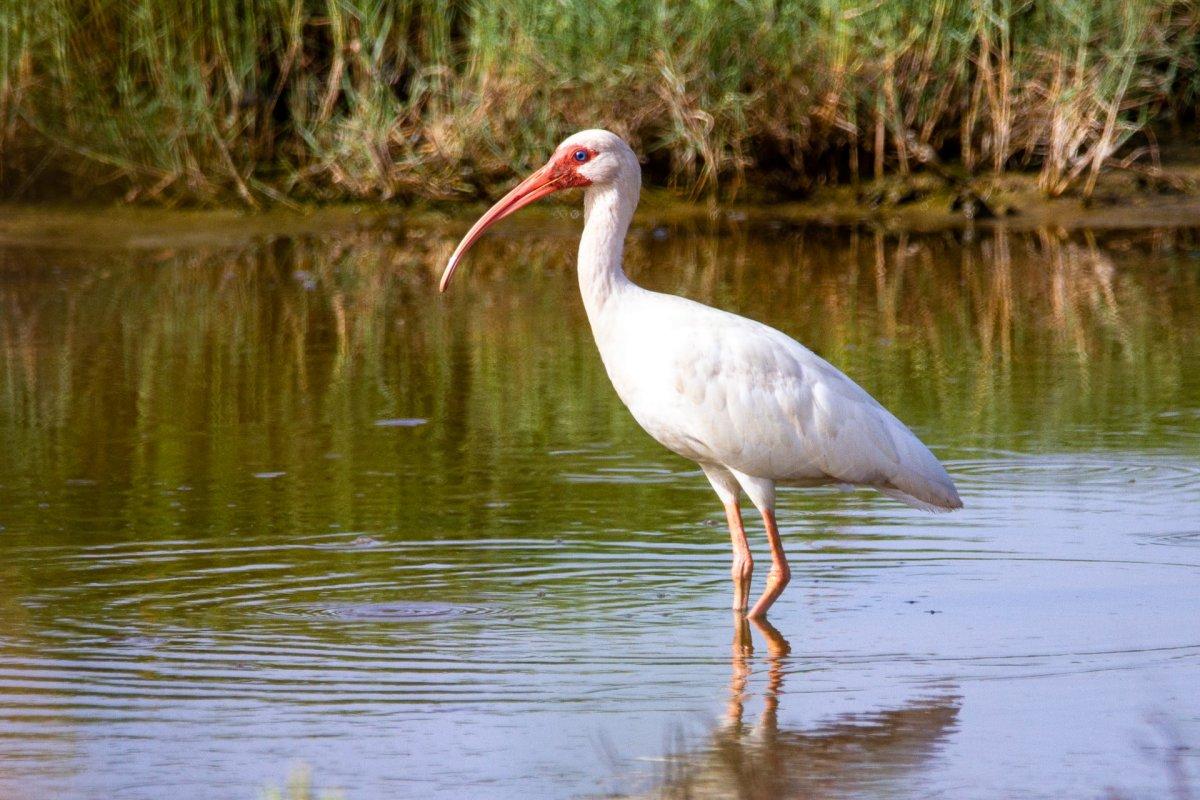
- Name: American white ibis
- Scientific name: Eudocimus albus
- Conservation status:
The American white ibis is a species of bird from the ibis family. It can be found around the coasts of northern, central and southern America, where it gathers in large colonies, especially during the breeding season. It feeds on crustaceans and crayfish, as well as a wide variety of fish.
In Mexico, it lives on both coasts, and a breeding colony has been established in the state of Colima, on the western coast.
11. Jaguar
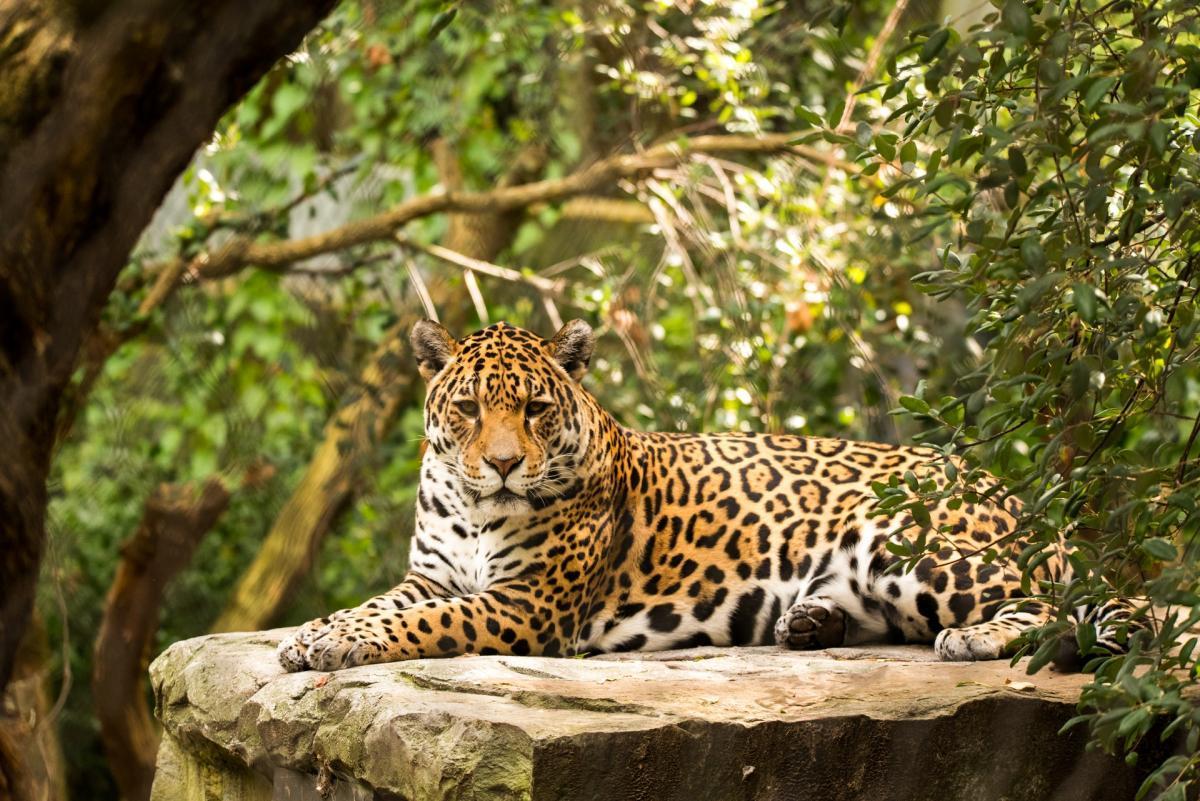
- Name: Jaguar
- Scientific name: Panthera onca
- Conservation status:
The jaguar is the emblem of Central and South America, the largest cat in the Americas and the third-largest species of wild cat in the world. It has a particularly powerful bite that can destroy skulls and pierce the carapaces of tortoises without any issue!
Some rare individuals are melanistic, and are then known as black panthers; one of them was recorded in the Sierra Madre Occidental mountains in the northern parts of Mexico in 2004.
12. American black bear
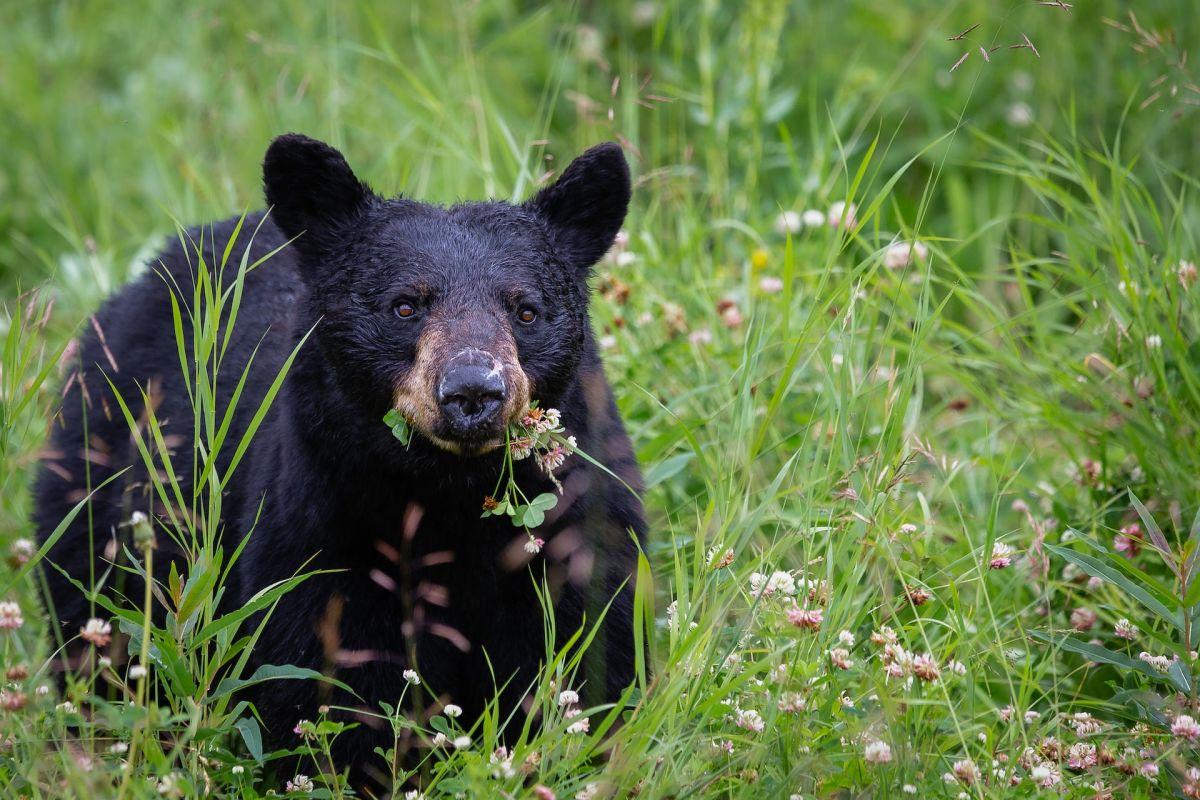
- Name: American black bear
- Scientific name: Ursus americanus
- Conservation status:
Famous to a lesser extent than its widely known counterpart, the grizzly bear, the American black bear, also simply known as the black bear, is the most widespread and smallest species of bear in the Americas. It is endemic to North America, and its population is estimated to be twice that of all other bears combined!
In Mexico, there is also a subspecies, the East Mexican black bear, which can be found in the northeastern parts of the country and is critically endangered.
13. Guadalupe fur seal
- Name: Guadalupe fur seal
- Scientific name: Arctocephalus townsendi
- Conservation status:
The Guadalupe fur seal is a species of fur seal that almost disappeared at the end of the 19th century, with only a few dozen individuals remaining. At the end of the 1990s and thanks to conservation and recovery efforts, its numbers bounced back to about 10,000.
Most individuals can be found on Mexico’s Guadalupe Island (where you can dive with great white sharks), located off the northwestern coast of the country, which is where they get their name from.
14. Great white shark
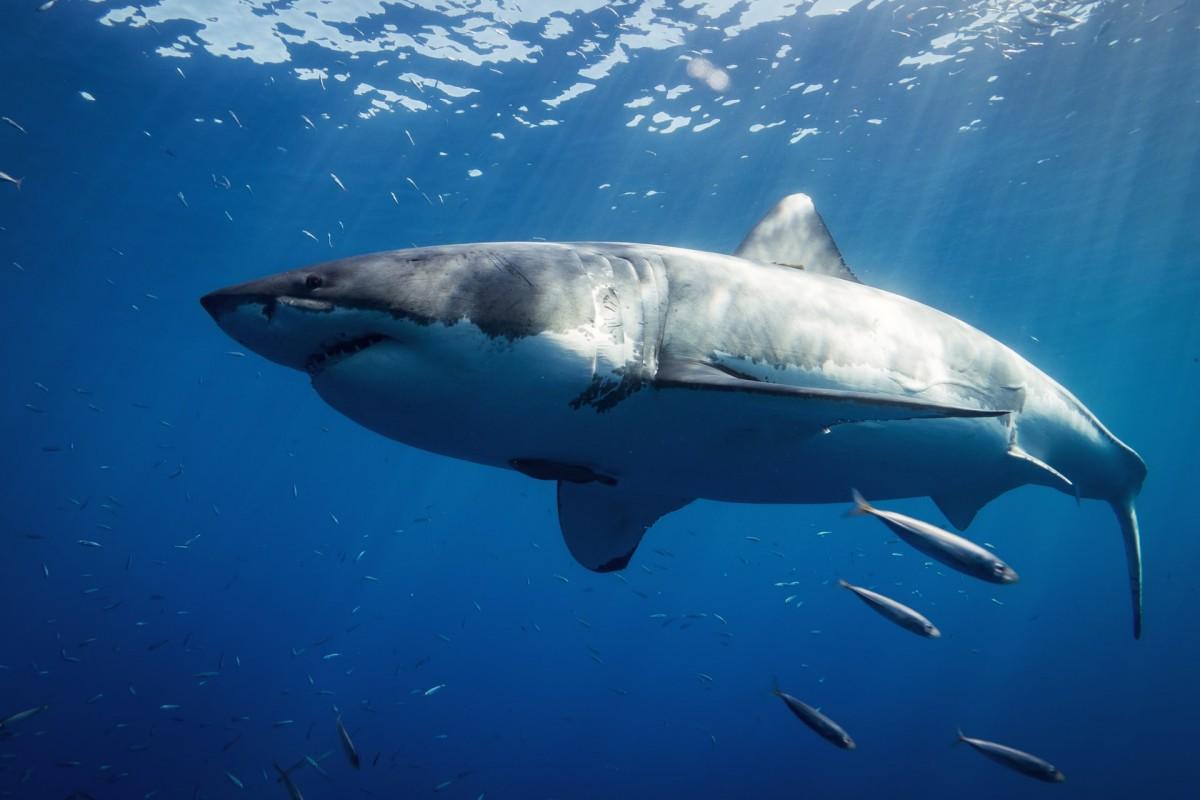
- Name: Great white shark
- Scientific name: Carcharodon carcharias
- Conservation status:
The great white shark, also known as the white pointer, the white shark, or simply the great white, is arguably the most famous species of shark in the world. It lives in coastal, surface waters of all the major oceans, and is a prominent figure in popular culture, such as in the novel and movie “Jaws”.
Because this species needs to migrate long distances and has a very demanding diet, it cannot be kept in captivity, and conservation efforts are particularly difficult to establish, although this species is internationally protected.
15. Baird’s tapir
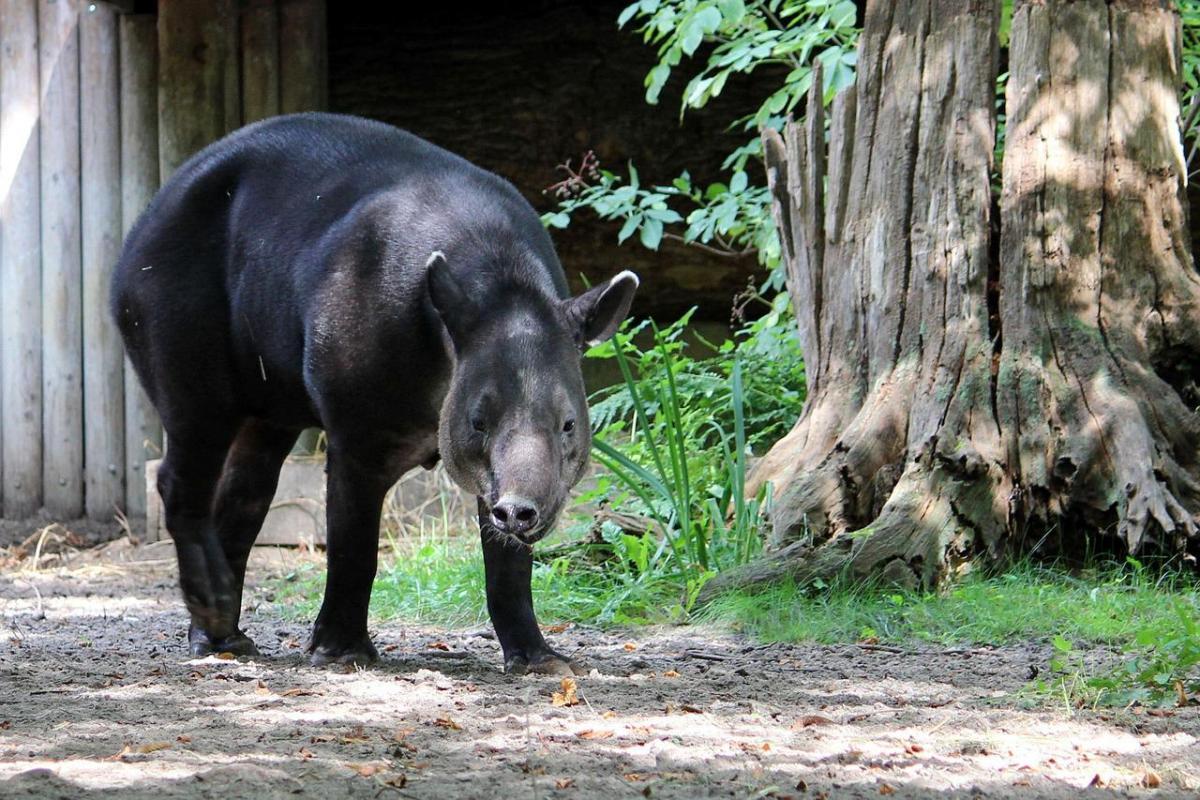
- Name: Baird’s tapir
- Scientific name: Tapirus bairdii
- Conservation status:
The Baird’s tapir, also known as the Central American tapir, is the largest native land mammal in Central and South America, and it can be found from Mexico to northwestern South America.
This species is active at all hours and is a herbivore that feeds on leaves, blossoms, twigs, grasses, and fruits. It can be potentially dangerous to humans, but only as a form of self-defense: on rare occasions, some individuals charge and gore humans.
16. Pronghorn
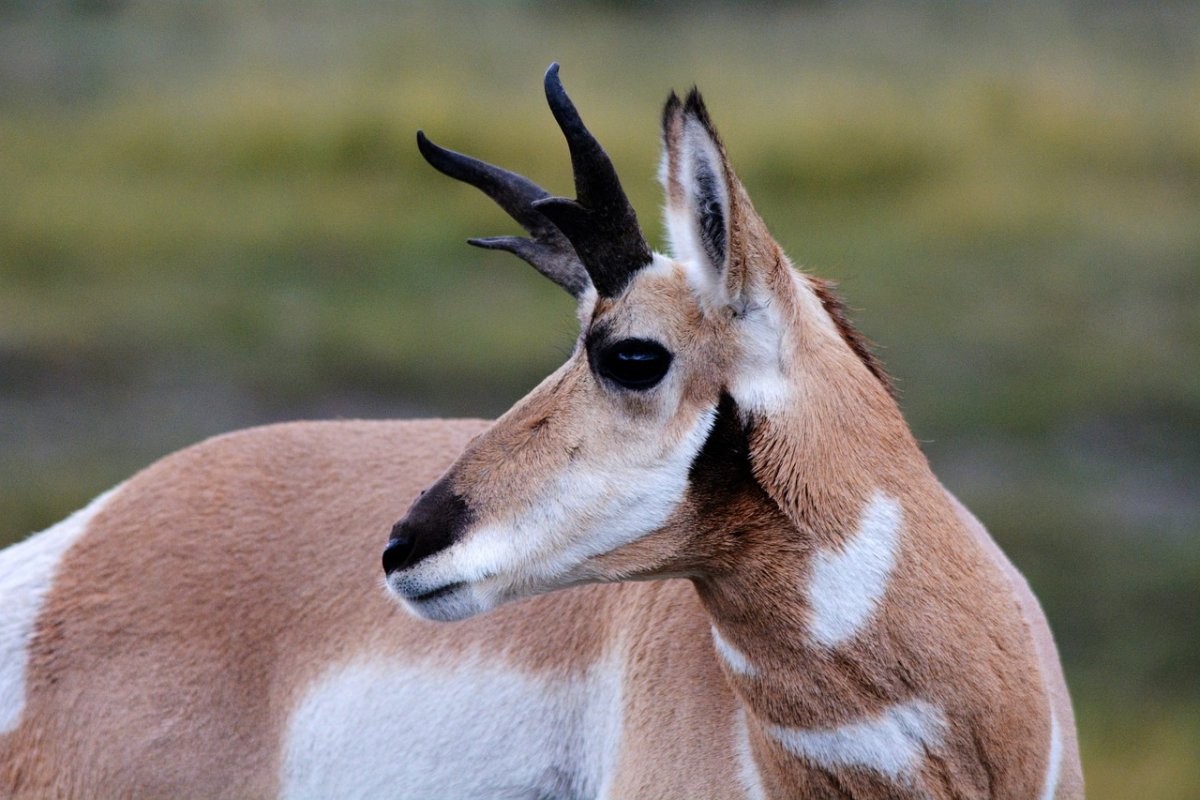
- Name: Pronghorn
- Scientific name: Antilocapra americana
- Conservation status:
The pronghorn antelope, also known as the prong buck, the American antelope, or the prairie antelope, is a species of antelope native to North America. It is the fastest land mammal in the Western Hemisphere, reaching speeds of up to 89 km/h / 55 mph!
This antelope can be found in San Luis Potosí, Sonora, and northern Baja California Sur in northern and central Mexico, where it lives in open terrain, at elevations between 900 and 1,800 m / 3,000 and 5,900 ft above sea level.
17. Plains bison
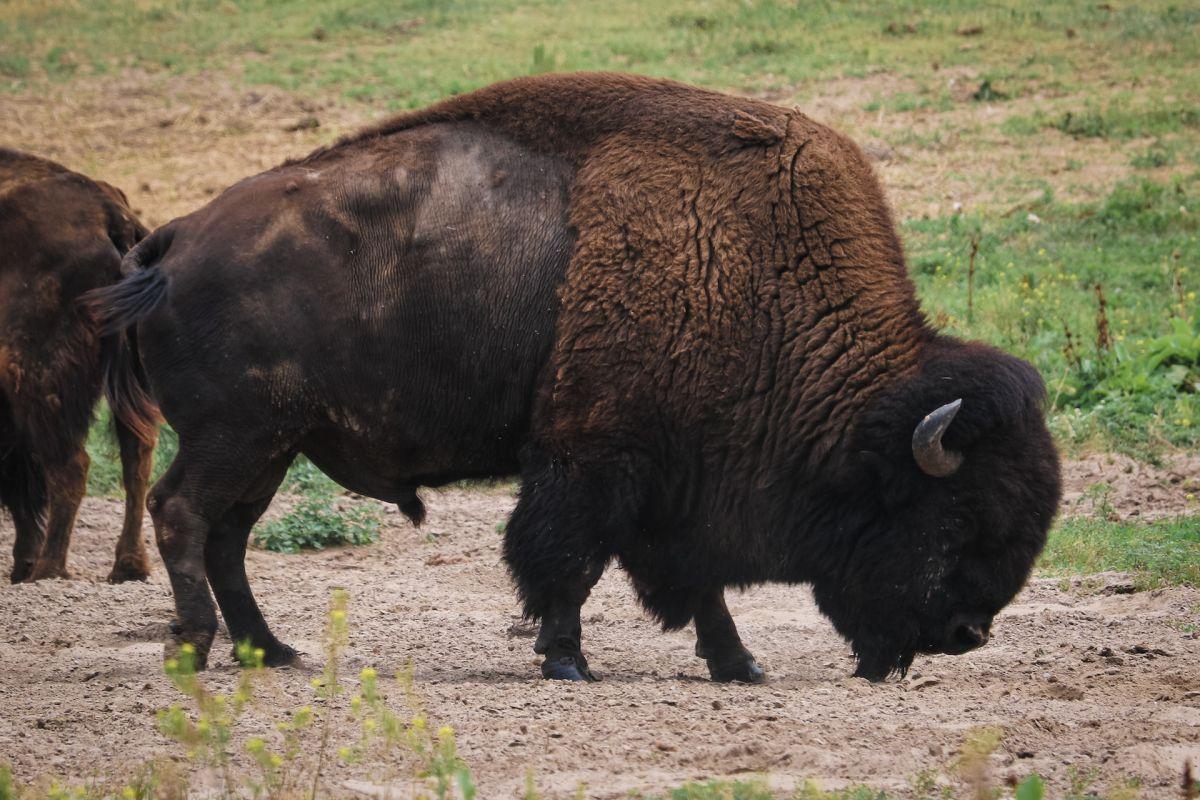
- Name: Plains bison
- Scientific name: Bison bison bison
- Conservation status:
The Plains bison is one of two subspecies of the American bison, alongside the wood bison. It is a large species of bovine that was hunted to near-extinction throughout the 19th century, but was slowly reintroduced in the wild, and is now listed as near threatened.
This bison allowed Plains tribes to do anything, from feeding on its meat to creating tools and items such as beads, arrow points, needles from bones, and spoons from the horns.
18. Desert bighorn sheep
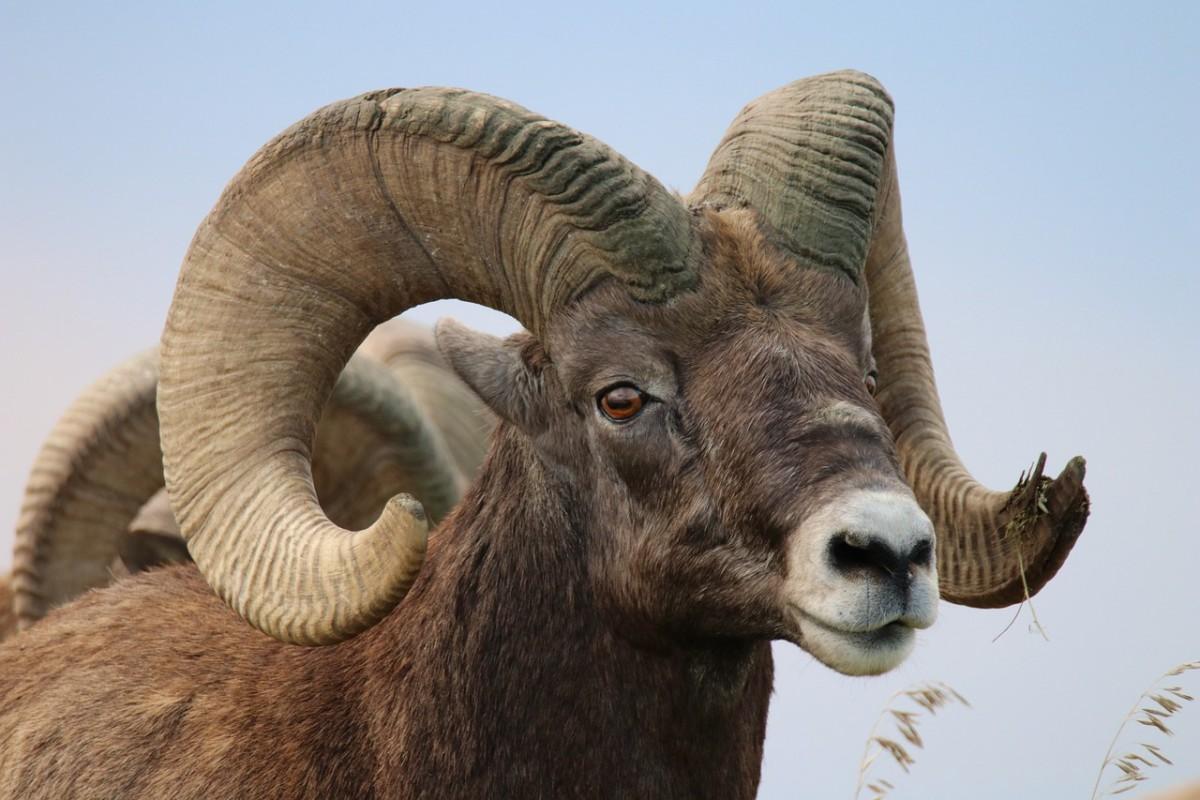
- Name: Desert bighorn sheep
- Scientific name: Ovis canadensis nelsoni
- Conservation status:
The desert bighorn sheep is a subspecies of the bighorn sheep native to northwestern Mexico and southwestern and western United States. In Mexico, it is the mascot of the Universidad Autónoma de Baja California, and is particularly adapted to the Mexican desert.
This sheep’s body temperature can fluctuate several degrees, unlike lots of mammals, which is ideal to survive in the intense hot days and the shivering cold nights of the desert.
19. White-nosed coati
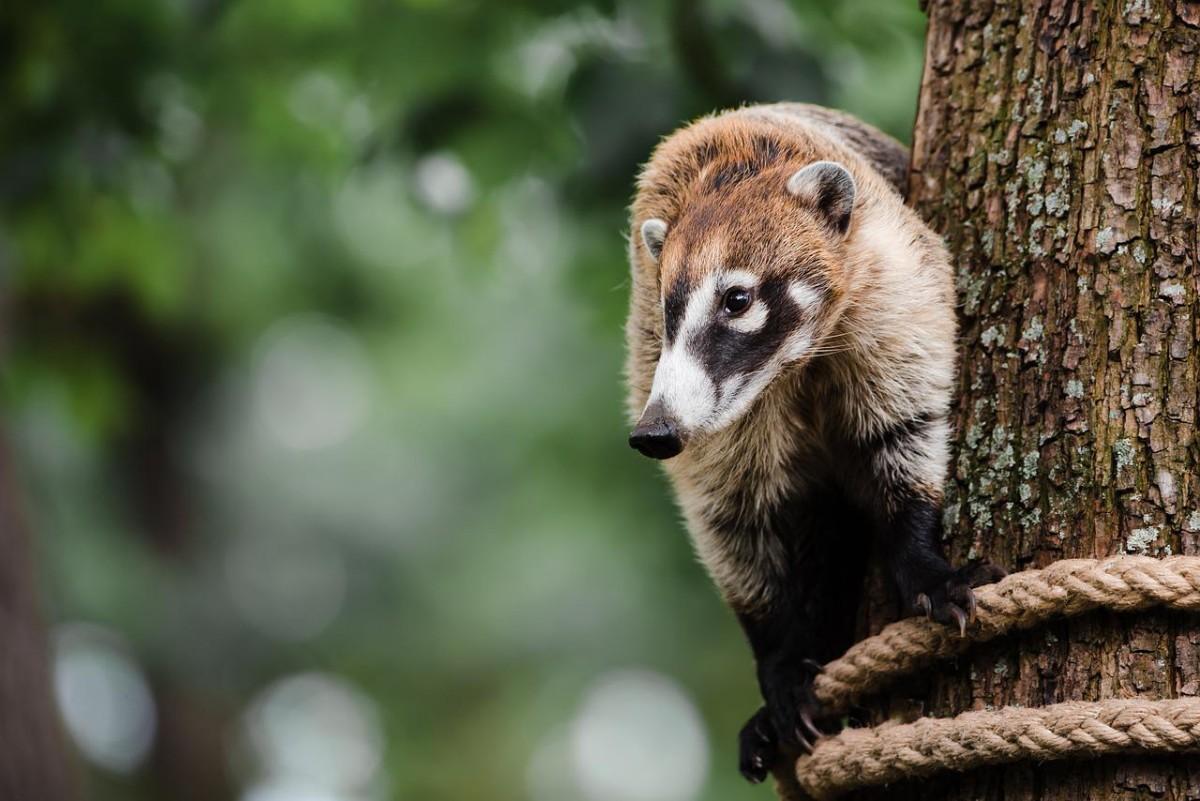
- Name: White-nosed coati
- Scientific name: Nasua narica
- Conservation status:
The white-nosed coati, also known as the Mexican Bin-dog’, the coatimundi, the antoon, the pizote and the tejón, is a species of coati native to much of Mexico, as well as the United States and Central America.
There, it inhabits subtropical and tropical dry, broadleaf forests, at elevations varying from sea level to 3,000 m / 9,800 ft above it. It is an arboreal omnivore that mostly feeds on fruits, small vertebrates, insects, eggs, snakes and carrion.
20. Bald eagle

- Name: Bald eagle
- Scientific name: Haliaeetus leucocephalus
- Conservation status:
The bald eagle is a large species of bird of prey native to North America, and the well-known emblem of the United States. It is an opportunistic feeder which largely eats fish, and it builds the largest tree nests ever recorded in the world, reaching 4 m / 13 ft deep, 2.5 m / 8.2 ft wide…, and weighing 1 ton / 1.1 short ton!
As you know, the bald eagle is not actually bald, but its name derives from “white-headed”. In Mexico, it is known to nest on top of hecho cactuses, which are featured on the country’s flag.
21. Margay
- Name: Margay
- Scientific name: Leopardus wiedii
- Conservation status:
The margay is a small species of wild cat native to Central and South America. It is both nocturnal and solitary and is pretty difficult to observe. Its main habitats are deciduous and evergreen forests.
This wild cat lives in the tropical lowlands of Mexico and can be found in 24 out of the 32 states of the country. Occasionally, it is spotted around cocoa and coffee plantations.
22. Ocelot
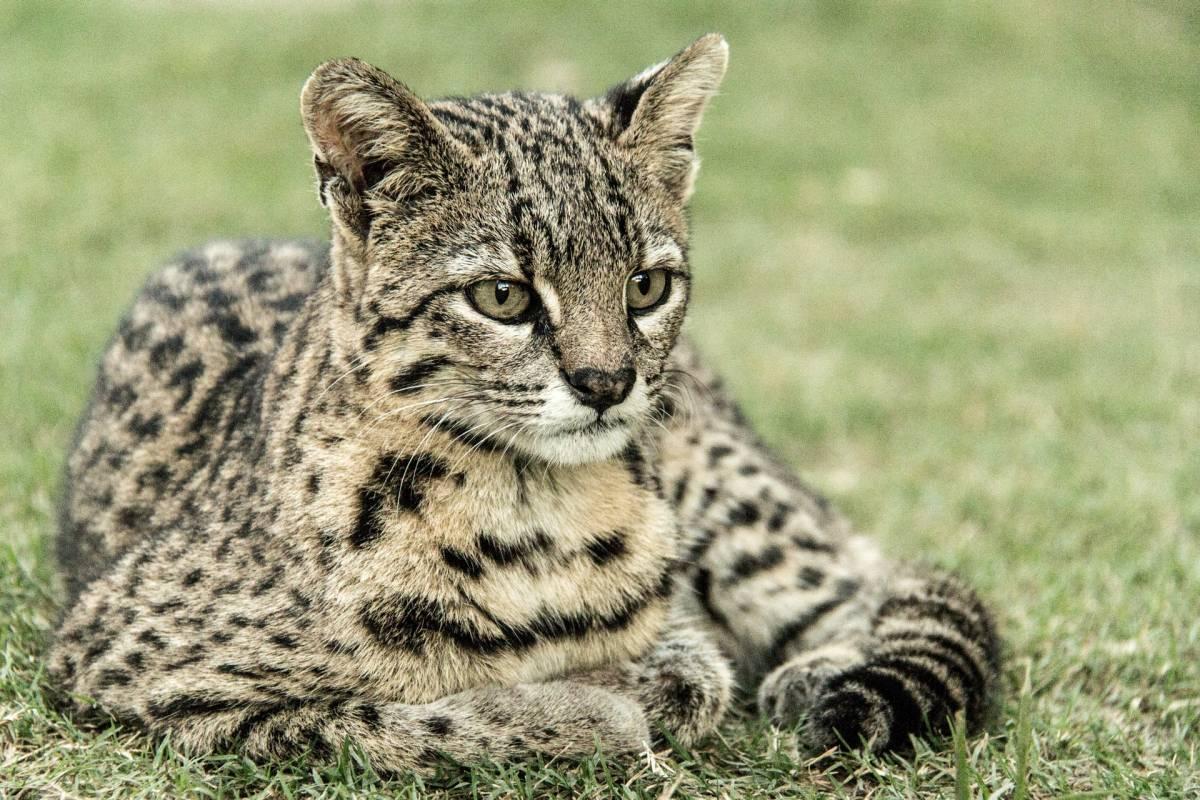
- Name: Ocelot
- Scientific name: Leopardus pardalis
- Conservation status:
Closely related to the margay, the ocelot is yet another medium-sized species of wild cat. It is native to Mexico, the southern United States, as well as Central and South America, and is active both during twilight and at night. It is a solitary and territorial mammal that is an adept climber, swimmer, and leaper.
Ever since the Aztec and Incan civilizations, the ocelot has been closely associated with humans and sometimes even kept as a pet.
23. Greater grison
- Name: Greater grison
- Scientific name: Galictis vittata
- Conservation status:
The greater grison is a species of mustelid native to Mexico and Central and South America. It has a slender body with short legs, as well as a short, bushy tail. Mainly terrestrial, this mustelid can also climb trees and swim pretty well, and while it is most active during the day, it can also emerge at night.
This mammal largely feeds on small vertebrates such as fish, birds, mammals, and amphibians, and it has a snake-like movement when hunting, making short bounds in a zigzag pattern.
24. Neotropical otter

- Name: Neotropical otter
- Scientific name: Lontra longicaudis
- Conservation status:
The neotropical otter, also known as the neotropical river otter, is a species of otter native to Central and South America, as well as the island of Trinidad. It inhabits most riverine habitats, such as savannas and evergreen and deciduous forests.
This otter largely subsists on fish and crustaceans, which collectively make up 95 percent of its diet, the rest being made of small mammals and mollusks.
25. Crested owl
- Name: Crested owl
- Scientific name: Lophostrix cristata
- Conservation status:
The crested owl is a species of owl native to Central and South America, and some parts of southern Mexico. It is easily recognizable thanks to its very long ear tufts which give it its name, and it inhabits lowland rainforests, usually next to a body of water.
This owl is also found in semi-deciduous and tropical evergreen forests, as well as clearings, riparian areas, and foothills in Mexico.
26. Keel-billed toucan
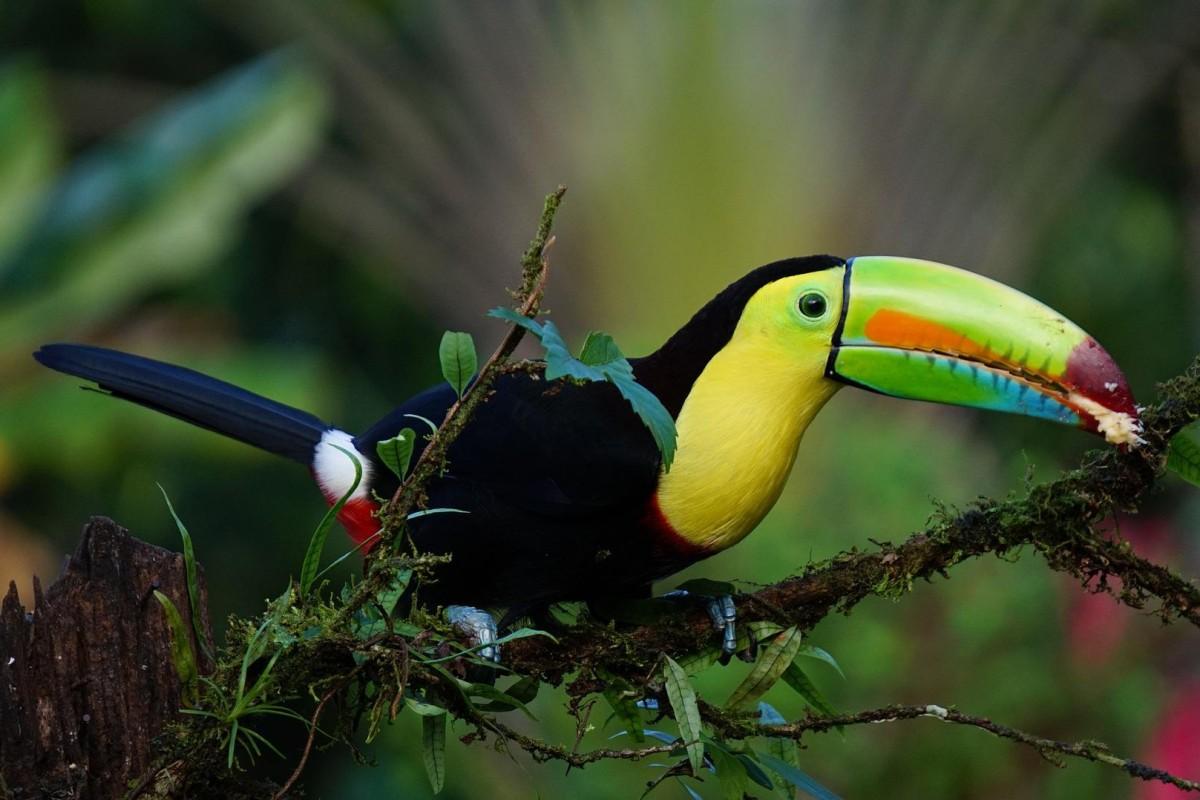
- Name: Keel-billed toucan
- Scientific name: Ramphastos sulfuratus
- Conservation status:
The keel-billed toucan, also known as the rainbow-billed toucan or the sulfur-breasted toucan, is a colorful species of toucan native to Central America. It is the national bird of Belize and can be found in tropical jungles from Colombia in the South to southern Mexico in the North.
This toucan feeds on seeds, fruits, insects, invertebrates, snakes, small birds, and their eggs and lizards, and, similarly to most toucans, has a very large, multi-colored bill.
27. North American cougar
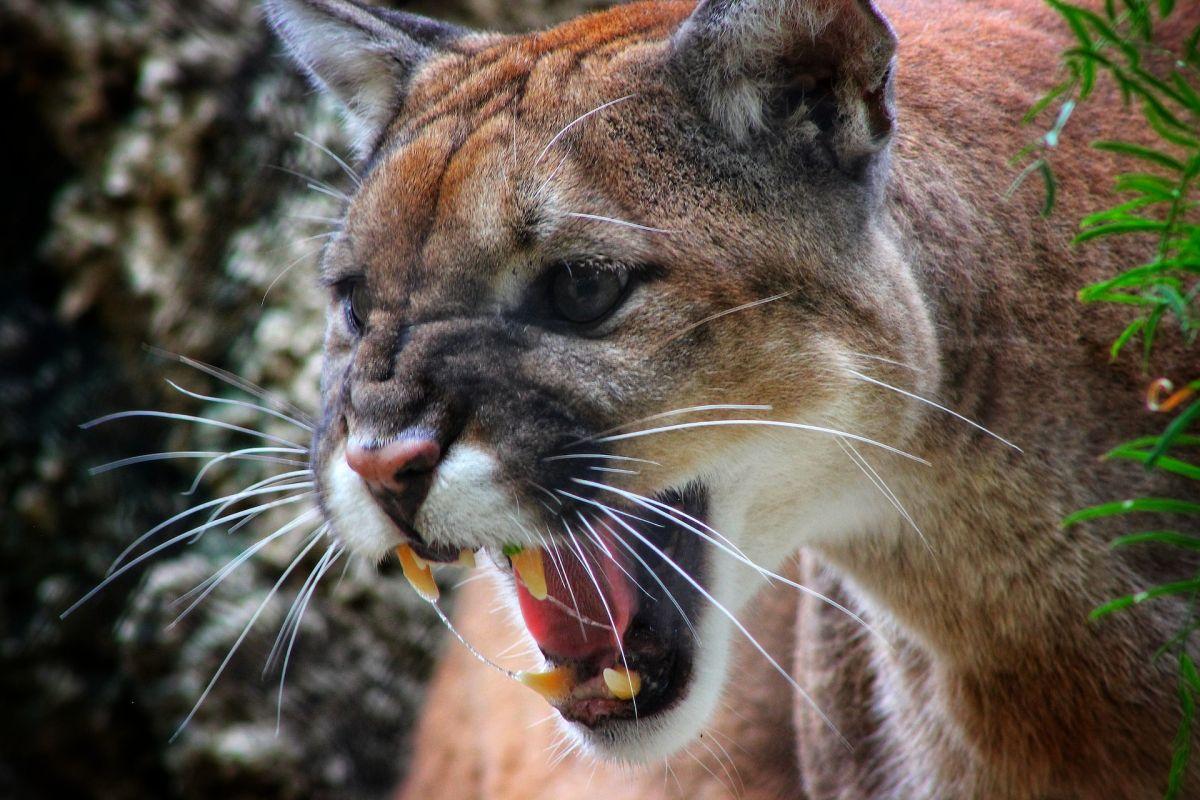
- Name: North American cougar
- Scientific name: Puma concolor couguar
- Conservation status:
Last but not least, the North American cougar is the other large species of wild cat that can be found in Mexico, aside from the jaguar. It is the largest cat in North America, and its Mexican population is on the rise and could grow very big in the years to come.
Outside of the western United States, Mexico and Central America, its official range, it was also sighted in the eastern United States (in states such as Michigan, Connecticut, Illinois, and Tennessee), which is very unusual.
—
So there you have them, these were my 27 native animals of Mexico. I hope you enjoyed this list and that you learned something new today.
In case you want to learn more about Mexican wildlife, feel free to keep reading, as I still have lots of things to tell you about:
Endangered Animals of Mexico
This is definitely the saddest part of the list, but it is very important to raise awareness. Because of this, let’s go through the list of endangered animals in Mexico.
Here are the animals in danger of extinction in Mexico.
- Socorro dove
- Charco Palma pupfish
- Caribbean monk seal
- Monterrey platyfish
- Nelson’s rice rat
- and 23 more…
- Poza Turipache rain frog
- Kemp’s ridley turtle
- San José brush rabbit
- Imperial woodpecker
- Townsend’s shearwater
- and 184 more…
- Splendid toadfish
- Chamula Mountain brook frog
- Tehuantepec jackrabbit
- Maroon-fronted parrot
- Bonnethead shark
- and 311 more…
To see the full list of endangered species in Mexico, head over to the International Union for Conservation of Nature’s Red List.
What is the National Animal of Mexico?
The national animal of Mexico is the golden eagle.
While the chapulin is the national arthropod, the axolotl is the national amphibian, the ocelot is the national feline and the xoloitzcuintli is the national dog, Mexico chose the golden eagle to be its overall national emblem.
The golden eagle is a large species of bird of prey native to much of the Northern Hemisphere. It is an important part of human culture and has been since the beginning of known history. It was a major Aztec symbol and is featured on the Mexican flag, which depicts the story of the tribal and sun god Huizilopochtli telling his people to build their city, Tenochtitlan, where they saw the sun shaped as an eagle perched on a cactus.

How Many Animals Native to Mexico?
What is the diversity of native animals in Mexico?
Let’s look at the total number of species of Chordata (mammals, birds, fishes, and reptiles).
Total number of animal species in Mexico: 5,947 (8,066 in total in Mesoamerica)
More About Animals in the World!
Loved these Mexico wildlife facts? Want to see what animals live in other countries?
Then check out these posts:
Or click here to see ALL the facts up on the blog! Spoiler alert: there’s A LOT of them.
Share the knowledge! Click on the buttons below to share information about these Mexico animals facts with your friends, and help them learn more about the world 🙂
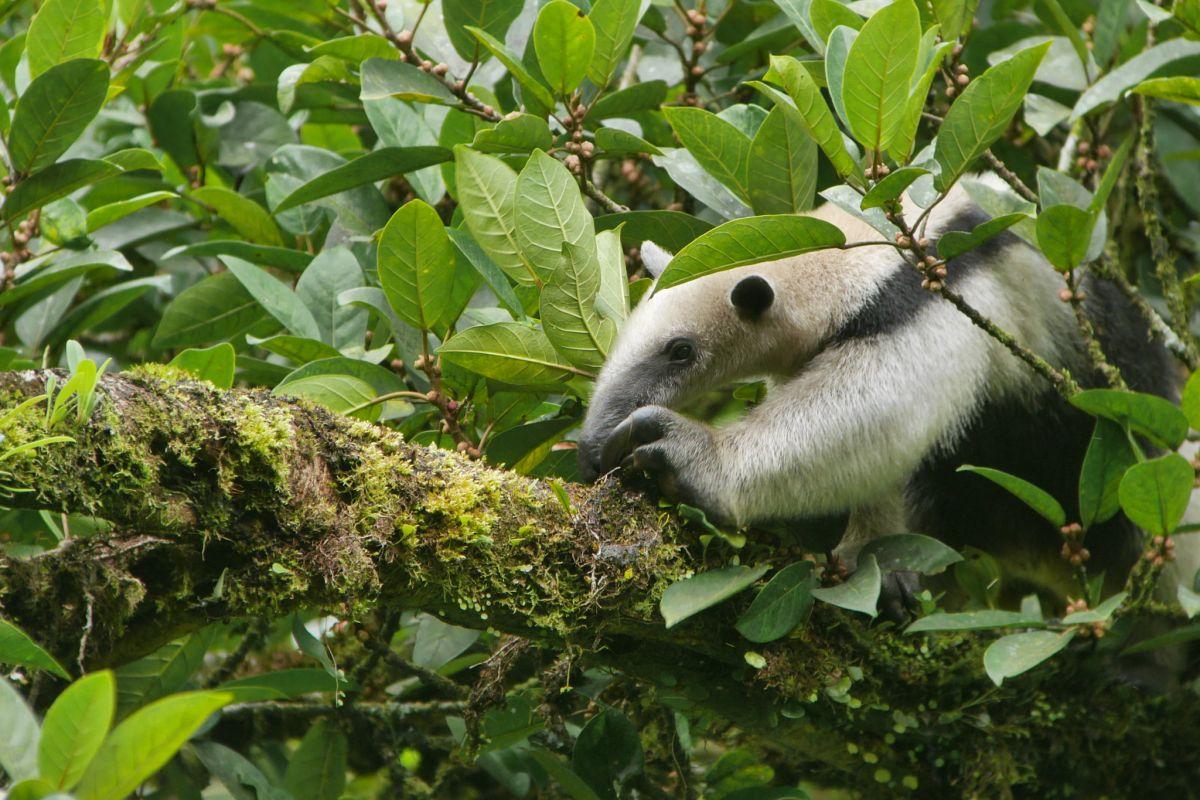
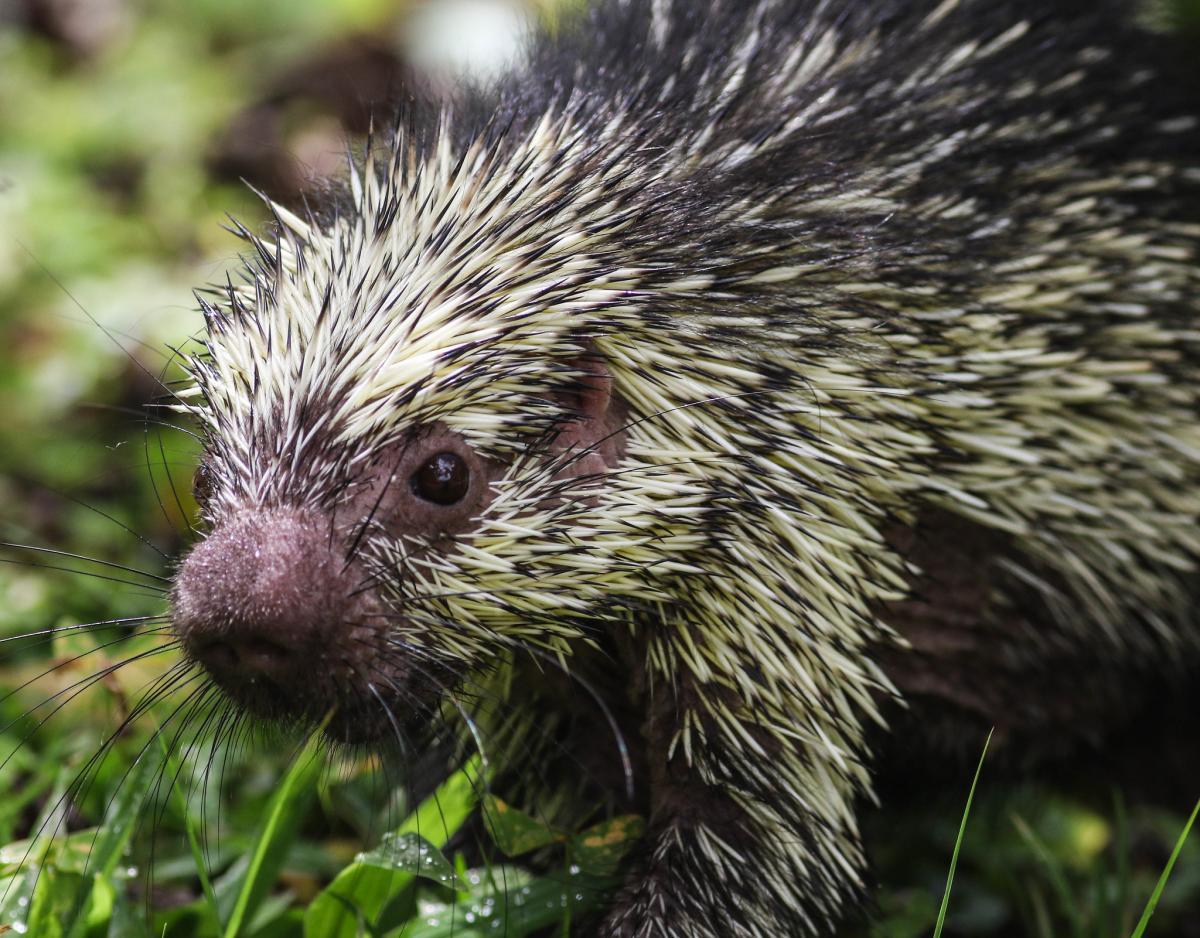
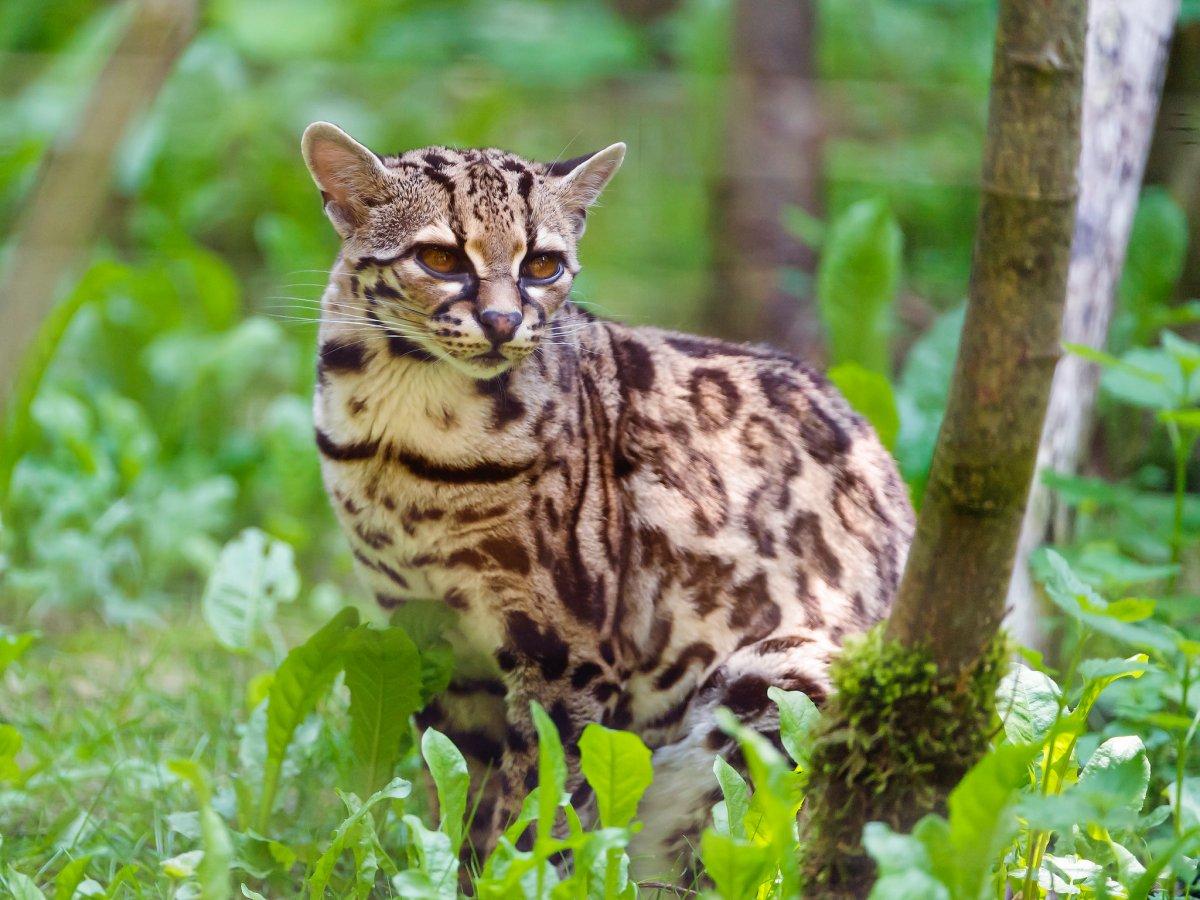
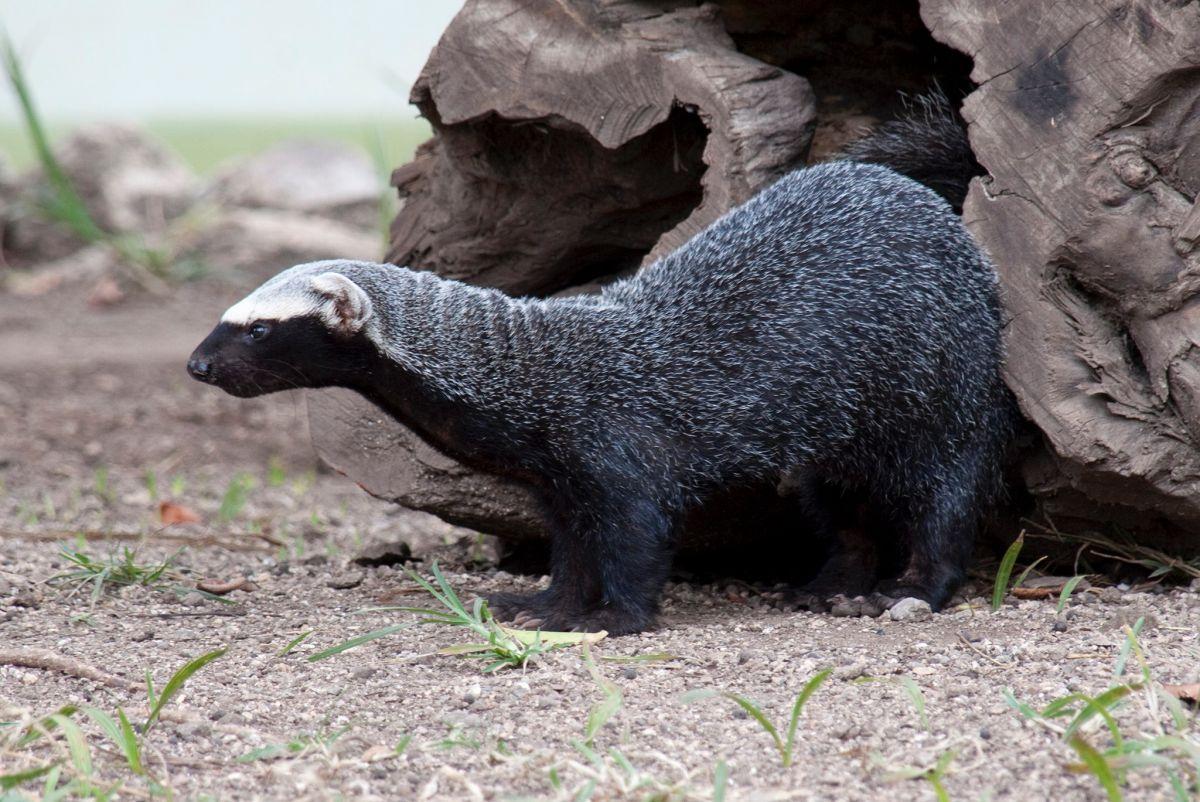
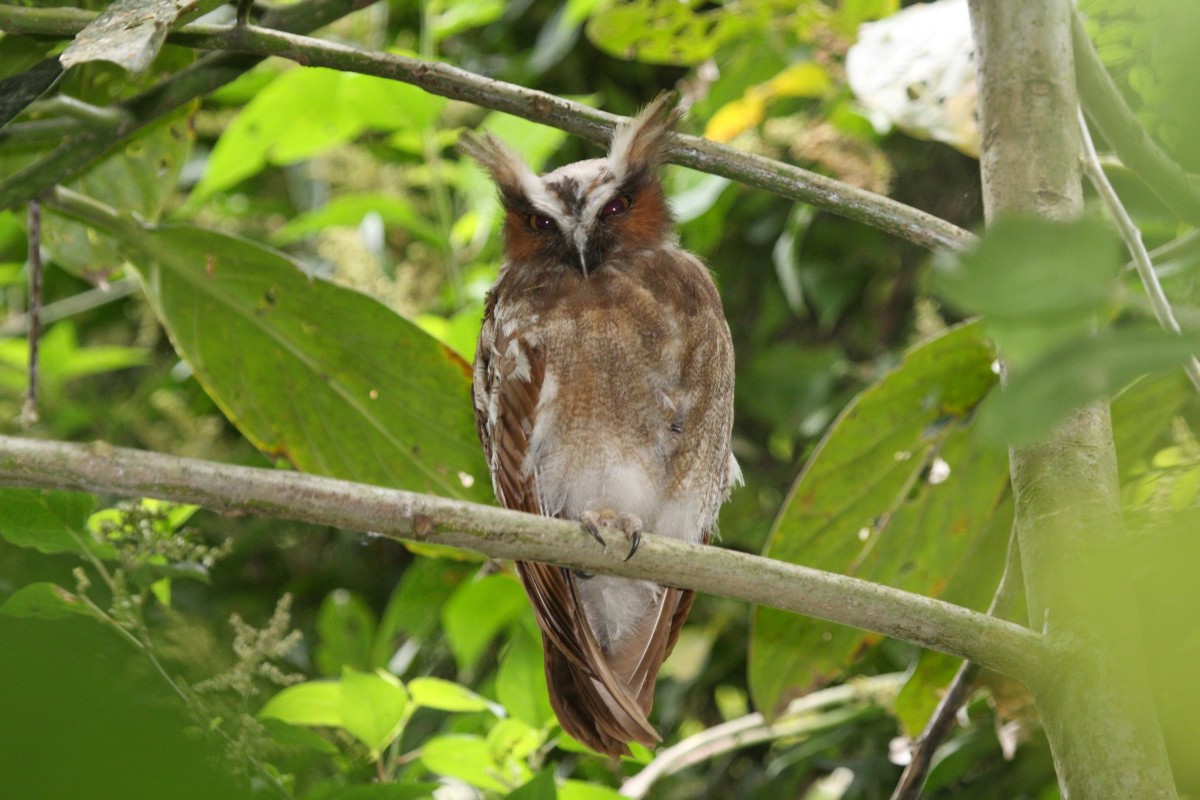

![19 Wild Animals in Palestine [Wildlife in Palestine]](https://www.kevmrc.com/wp-content/uploads/2022/06/19-wild-animals-in-palestine.jpg)
![21 Wild Animals in Norway [Wildlife in Norway]](https://www.kevmrc.com/wp-content/uploads/2022/10/21-wild-animals-in-norway.jpg)
![20 Wild Animals in England [Wildlife in England]](https://www.kevmrc.com/wp-content/uploads/2022/10/20-wild-animals-in-england.jpg)